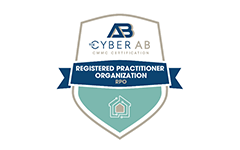Zero Trust Architecture: Continuous Verification for Evolving Threats

In today’s world of rapidly evolving cyber threats, insider risks, and sophisticated nation-state adversaries, traditional perimeter-based security is no longer sufficient for protecting mission-critical networks and data. If one bad actor can disrupt operations, then the system was never truly secure. Tyto Athene’s Zero Trust Architecture (ZTA) solutions shift this security paradigm, eliminating implicit trust; enforcing least-privilege access; and requiring continuous verification of all users, devices, and workloads.
Tyto provides Zero Trust Assessments and ZTA solutions to help federal agencies design, implement, and adopt Zero Trust strategies that align with executive mandates and federal cybersecurity requirements, ensuring greater operation continuity and positive mission outcomes.
Comprehensive ZTA Capabilities
Actionable Zero Trust Assessments
Threat Reduction & Risk Mitigation
ZTA Solutions & Implementation
Secure Cloud & Hybrid Environments
Compliance Alignment
Identifying Today’s Challenges in Zero Trust Implementation
- Evolving federal mandates require flexible, expert partners to ensure compliance without disrupting operations.
- Legacy perimeter-based security exposes high-value assets to insider threats and lateral attacks.
- Perimeter-based systems lack continuous verification, undermining least-privilege models and leaving agencies vulnerable.
- Disparate cloud and on-premise systems complicate Zero Trust implementation, requiring a unified, scalable approach.
Why Tyto?
Certified
Tyto delivers mission-ready Zero Trust solutions that help federal agencies reduce risk, achieve compliance, enhance cybersecurity resilience, and meet evolving federal mandates.
Case Study
Zero Trust Security Modernization
Challenge
A homeland security agency needed to adopt Zero Trust to comply with EO 14028 and secure remote work, cloud applications, and classified IT environments. Its existing perimeter-based security model posed significant insider risks, lacked network segmentation, and struggled against sophisticated modern cyber threats.
Solution
Tyto conducted a Zero Trust Assessment to evaluate the agency’s security maturity and developed a phased implementation roadmap.
Our ZTA solutions delivered:
- Identity-based access controls and multifactor authentication (MFA)
- Micro-segmentation and network segmentation to prevent lateral threats
- Continuous monitoring and AI-powered threat detection for real-time response


